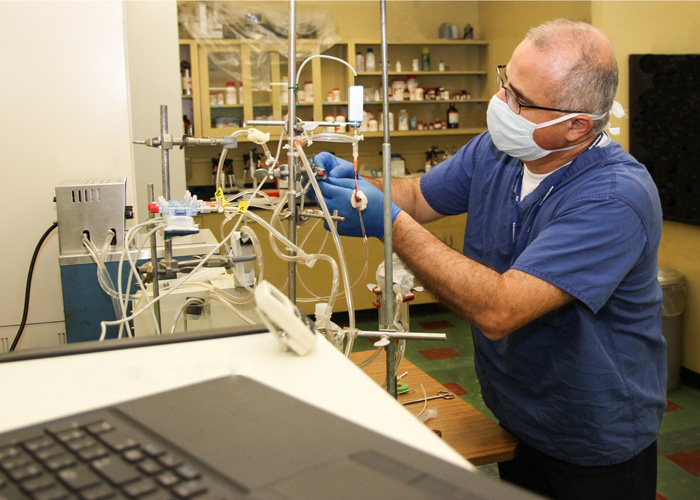Hansen Dissertation Abstract
Dynamic Multispectral NIR/SWIR Fluorescence Imaging for in vivo Lymphovascular Architectural and Functional Quantification
Dissertation Date: December 5, 2024
Although the lymphatic system is the second largest circulatory system in the body and is responsible for the return of interstitial fluid to the blood, transport of leukocytes and lipids as well as being a primary route for cancer metastasis, there are limited techniques available for characterizing lymphatic vessel function. Traditionally, lymphatic vessel function has been measured in two ways. The first is ex vivo following excision of vessels from animals or humans and placement on a fine wire myograph yielding a time series of contractility of the lymphatic vessel. With various types of imaging being the second, which shows lymphatic structure and function, but falls short of quantifying bulk lymph transport with high resolution. Limitations in these techniques result in poor characterization of lymphatics relative to the cardiovascular system.
Two common fluorescence imaging spectra for lymphatic imaging are nearinfrared first window (NIR-I, 700-900 nm) and shortwave-infrared (SWIR, 900-1800 nm) imaging. A custom NIR-I/SWIR multispectral imaging system was designed and built to simultaneously image subsurface lymphatic circulation in healthy, adult immunocompromised Salt Sensitive Sprague-Dawley rats and quantitatively compare imaging modalities. Two fluorescent imaging probes were also compared: indocyanine green (ICG) and silver sulfide quantum dots (QDs) as SWIR lymphatic contrast agents following intradermal footpad delivery in these rats.
SWIR imaging exhibits reduced scattering and autofluorescence background relative to NIR-I imaging. SWIR imaging with ICG provides 1.7 times better resolution and sensitivity than NIR-I and SWIR imaging with QDs provides nearly 2 times better resolution and sensitivity with enhanced vessel distinguishability. SWIR imaging of silver sulfide QDs provides a more accurate estimation of in vivo vessel size than conventional NIR-I imaging with ICG dye. Scalable semiautomatic computational tools to analyze whole body lymphatic imaging and determine image derived lymphatic function were also developed. Using traditional machine learning techniques, it was possible to discriminate between the fluorescence imaging time series in hypertensive and normotensive rats using ICG as contrast.
Return to Dissertation Schedule


